
TOWING THE LINE
Watch Connor take down another classic testpiece on the Empath cliff in Kirkwood, California.
Tu as un compte ?
Connecte-toi pour passer à la caisse plus vite.
Add $99.00 more to quality for free Shipping!
$0.00 USD
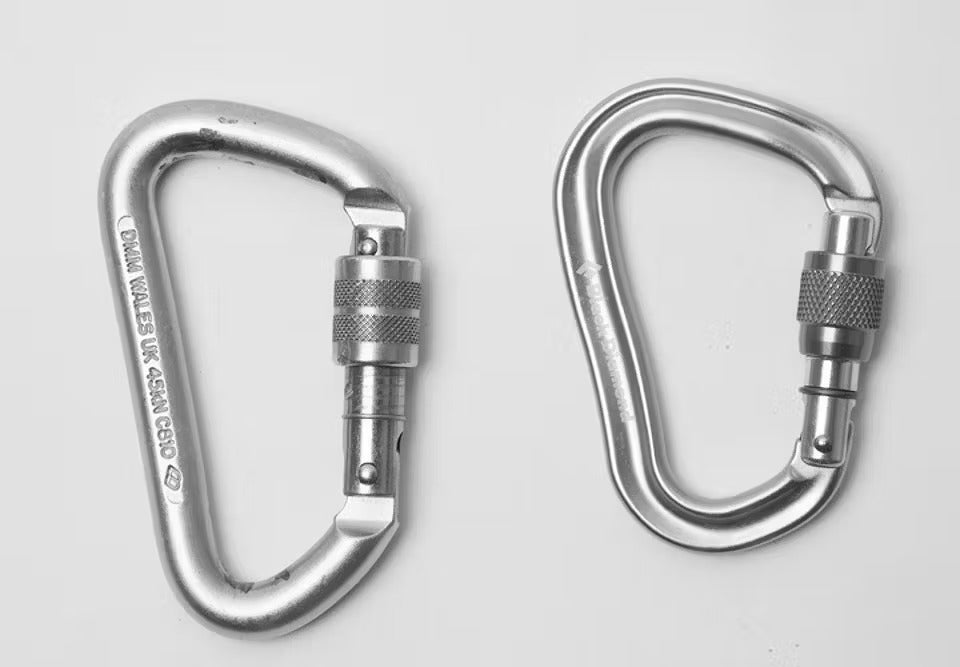
With dozens of companies making untold numbers of carabiners these days, it can be a real chore to navigate through countless different models to choose the one that's right for your type of climbing. Wiregate vs. standard gate. AutoLock vs. screwgate. Ultralight vs. heavy. What biners should I use on my slimmed-down alpine rack as opposed to my daily sport cragging kit? As with most pieces of climbing gear, there is a certain amount of inherent versatility, but often certain products are better suited, and more often than not designed specifically for certain applications. As with almost anything, it's always prudent to select the right tool for the job. This month we'll attempt to distill the basics of carabiner usage to help you figure out what's the right choice for your type of climbing.
We'll start off with a quick word on basic carabiner use because we get this question all the time.
I get lots of random calls from arborists, fire departments, rescue workers, marinas, yachting folks, Jeep guys and warehouse personnel wanting to know if it's okay to use our carabiners for their particular application. The official answer is always no, not recommended. Just as all of our instructions say, our gear is "For Climbing and Mountaineering Only." But why?
The simple answer is that we are climbers and mountaineers, we know climbing and mountaineering, and we design, test and certify our gear for climbing and mountaineering. We're not as intimate with the loads, the uses, misuses and abuses of these other applications.
What many people may not realize is the different ways that recreational gear is designed, tested and rated compared to industrial equipment. Industrial connectors are usually made of steel, are much heavier, are often much stronger, certified to different standards, and are sometimes rated differently than aluminum climbing carabiners.
Depending on what standard an industrial connector is certified to, and it’s intended application, it may be rated to either it’s Safe Working Limit (SWL) and/or it’s Minimum Breaking Strength (MBS). The steel connector on the left in the photo below has an MBS of 45kN - if it sees a load of 45kN, it will break. However, if a connector is marked with it’s SWL, it will have a safety factor included which could be anywhere from a factor of 4 and up. For example, let’s say a steel industrial connector is marked with a SWL of 10kN and is certified to an industrial standard which requires a safety factor of 4. This means that you can load the connector safely to 10kN - and that it won't actually break until a minimum of 40kN. However, climbing gear is always rated to the load at which it will actually break. So a 20kN carabiner actually breaks at that load. There's a big difference.
Bottom line: Climbing gear shouldn't be used in industrial applications—it just isn't designed, rated or certified for those types of loads and applications.
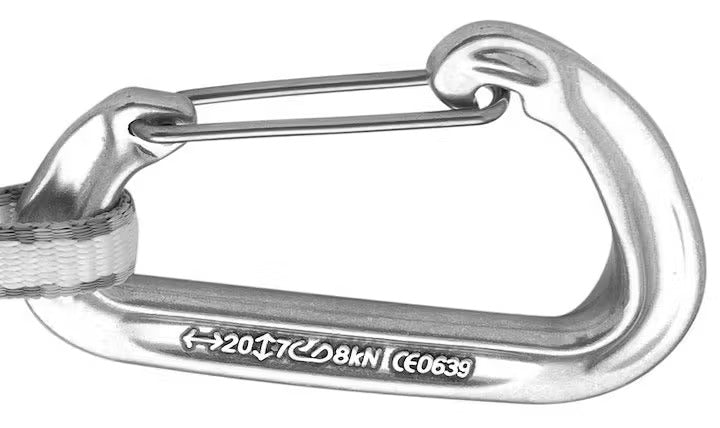
En ce qui concerne la "résistance" des mousquetons, presque tous ceux disponibles aujourd'hui sont certifiés CE. Cela signifie qu'ils répondent aux exigences minimales de résistance. Un groupe de personnes intelligentes a passé beaucoup de temps à déterminer quelles devraient être ces normes, en tenant compte des scénarios de charge réels en escalade et en alpinisme. Il existe quelques différences subtiles et exceptions lorsqu'on entre dans le vif du sujet des différents types de mousquetons, mais pour simplifier, les exigences de résistance minimales pour la plupart des mousquetons d'escalade sont :
Résistance du portail fermé - 20kN
Portail ouvert - 7kN
Axe mineur - 7kN
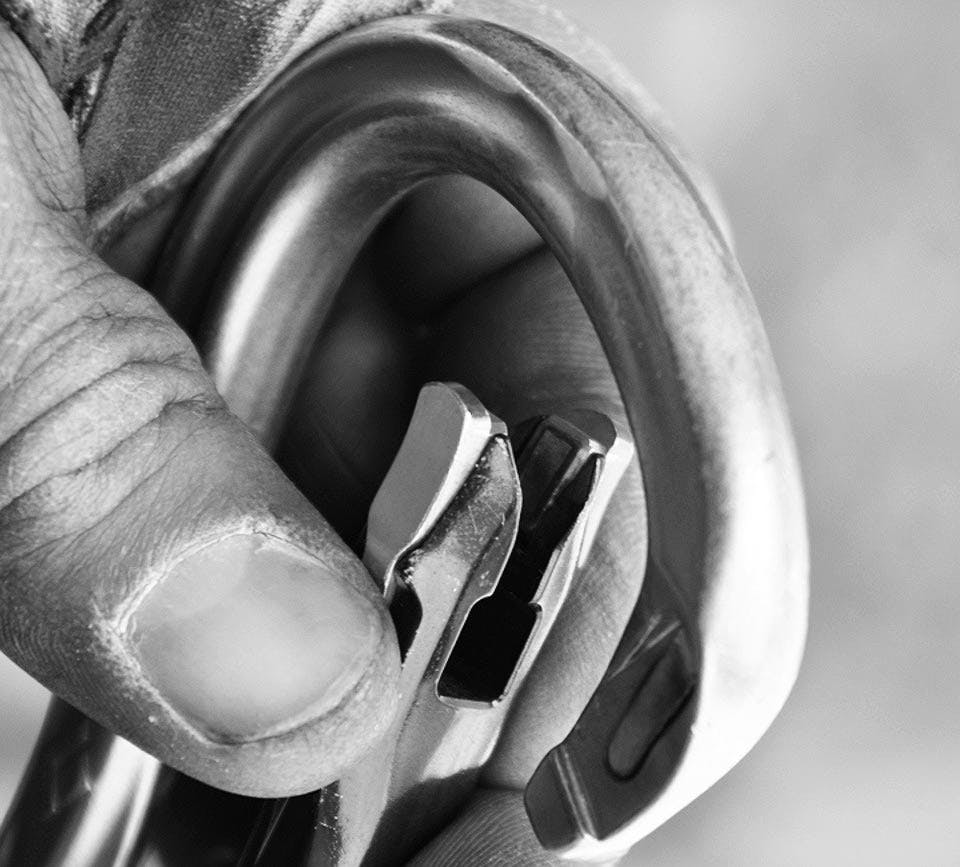
Though in theory loads at the belay can reach 20kN, this is extremely rare and likely caused because something didn't go right. Is a 24kN carabiner stronger than a 20kN carabiner? Yes. Does it matter? In most cases, likely not.
Now open-gate and minor-axis strengths for most carabiners are much less (about a third) than closed-gate, and are in the ranges that can actually be seen in the field. So a higher open-gate or minor-axis rating isn't necessarily a bad thing, but once again, all biners sold are going to meet the minimum requirements.
Even within the climbing and mountaineering carabiner world, how do you know which model or style to choose? Black Diamond alone manufactures over 30 different styles of carabiners. From belay-specific biners, lockers, wiregates, keylock and traditional-gate biners, to biners with "hoods" and now even carabiners with magnets. How is someone to know what is the right tool for the job? I'll speak mainly to Black Diamond's offering of carabiners because that's what I use and know best.
Belay Biners
Belay biners, also known as HMS biners, are always lockers, and typically have a large basket end to accommodate using a Munter hitch. There are heavier, larger versions usually made from a larger diameter rodstock, and there are smaller, often lighter versions which usually have a more aggressive I-beam construction-this puts material where it is needed to attain the required strength, but removes excess material from where it is not needed, resulting in a lighter biner. Larger diameter carabiners usually last longer as there is a consistent, larger rope-bearing surface to wear evenly, whereas lighter I-beam carabiners tend to show signs of rope wear more quickly due to the geometric differences where the rope runs.
I like the Rocklock or MiniPearabiner for my standard workhorse Belay biner, a Gridlock for use with a GriGri, and a Vaporlock for multipitch rock, ice or in the alpine.
Lockers
There are several different types of locking mechanisms available on the market today. As far as Black Diamond carabiners are concerned, these include:
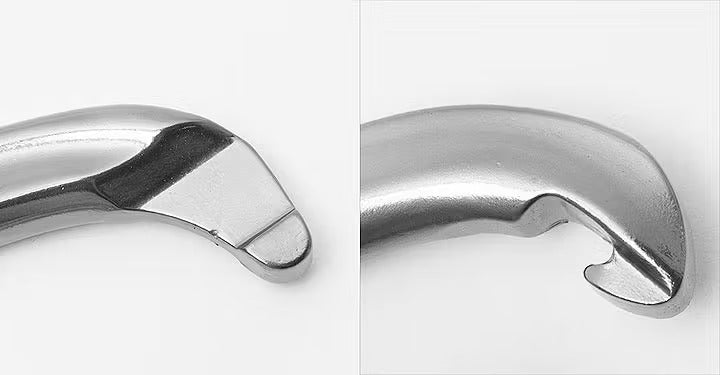
As well as the different types of locking mechanisms described above, there are two general families of lockers: big and small. Typically large lockers are used for belaying (as stated above), setting up top ropes, or acting as the power point in anchors. Smaller lockers are often used to build anchors, on a particular placement where you could be concerned about the gate opening, or to clove yourself into an anchor.
Wiregate vs Non-Wiregate
In 1995, Black Diamond brought wiregate technology to the climbing industry with the HotWire carabiner. Wiregate carabiners are typically lighter, less susceptible to freezing, and because of the reduced mass, less susceptible to gate whiplash. During a climbing fall there is a lot going on-carabiners are getting loaded, ropes are stretching and getting tight, things are bouncing around. Traditional gates on carabiners have more mass to them, and during all of this bouncing and vibration, it has been shown that the mass of the gate can allow it to open slightly which in effect results in an 'open gate' loading scenario. And as stated above, carabiners are typically 3 to 4 times as strong when the gate is closed. The reduced mass of a wiregate carbiner alleviates this.
Personally I like the fact that wiregate biners are usually lighter and less susceptible to freezing so I typically use them for long routes with long approaches, and ice or alpine climbing.
Keylock Gate vs. Non-Keylock Gate
Carabiners historically used a 'hook and pin' configuration to allow the gate to interface with the body of the biner and give it its strength during closed-gate loading. This style is consistent, strong, relatively easy to manufacture and relatively cheap.
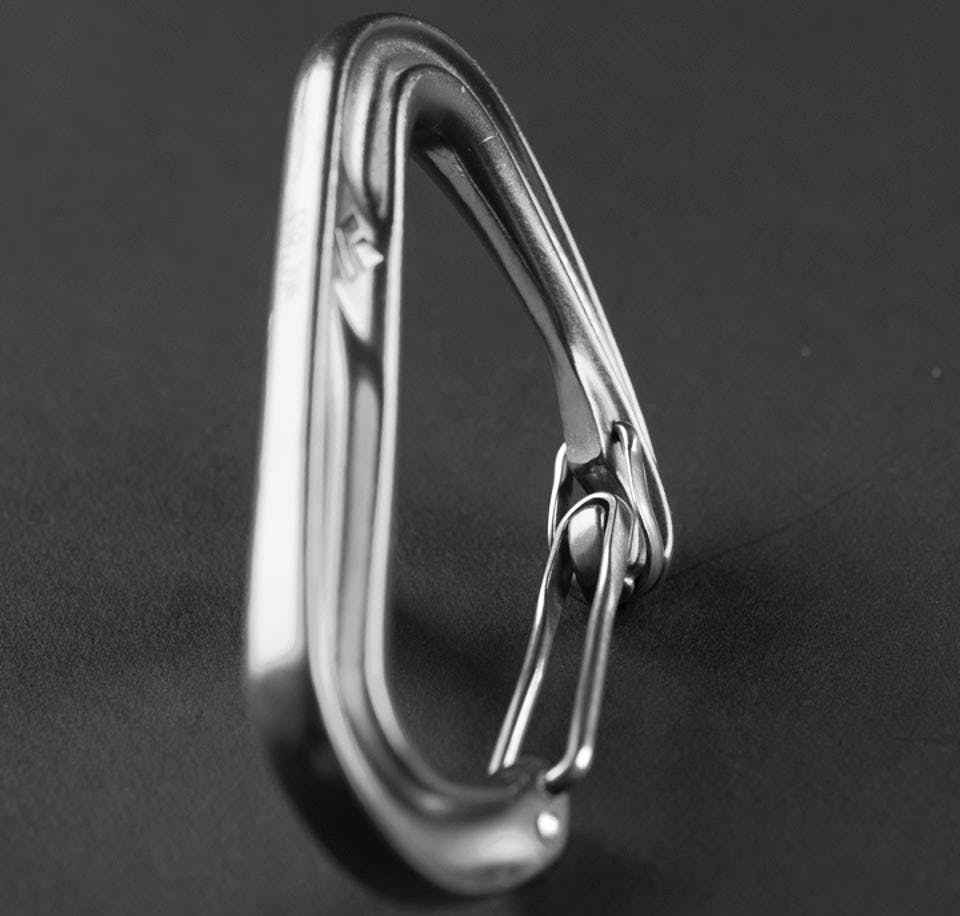
Un autre système de porte solide est apparu il y a quelques années : la porte à verrouillage par clé. Elle utilise la géométrie de la poche de la porte pour interagir avec le « museau » du mousqueton, ce qui lui confère sa robustesse en position fermée. L’avantage de ce design est qu’il réduit le risque que la partie crochue du mousqueton ne s’accroche à quelque chose (comme un crochet à boulon, un fil d’arrêt ou une sangle). Les mousquetons à museau croché sont étonnamment faibles, et c’est de loin le scénario le plus courant de défaillance de mousqueton sur le terrain. Jette un coup d'œil à un ancien post du QC Lab sur le sujet.
Le processus de fabrication des keylock gates est légèrement plus cher, mais tu bénéficies d'un mousqueton sans accrocs.
Jusqu'à récemment, si tu étais du genre à adorer le design keylock sans accrocs, mais aussi la légèreté et l'absence de fouet du wiregate, tu devais faire un choix. Mais maintenant, la technologie HoodWire de BD fait d'une pierre deux coups. Tu obtiens la fonctionnalité d'un mousqueton wiregate ainsi que les avantages sans accrocs d'un keylock, grâce à la simple capuche en fil du mousqueton. La technologie HoodWire est disponible à la fois sur le mousqueton HoodWire et sur notre Oz Carabiner mis à jour.

Heavy vs. Light
When our Oz carabiner first came out, my buddy Travis called me up all excited, "I'm going to order a full set of Oz quickdraws for my new sport climbing kit. They're so light!" It's true the Oz is a super-light biner at one ounce (hence the name), but is it the right choice for your sport climbing draws? Sure, if you're doing a multipitch sport route in the Canadian Rockies, or going for a hard, 22-draw onsight, go for it. But for a workhorse sport climbing carabiner, it's probably not the best choice. Why? In order to get the weight out of these lightweight biners, manufacturers are removing material, and though ultimately all carabiners are strong and meet all CE requirements, less material can mean a few things. The smaller size makes is slightly harder to clip. There can be less material in the spine, which makes it more susceptible to bending if loaded over an edge, and there oftentimes is less material on the rope-bearing surface, which means whippers are harder on your rope.
A quickdraw that is more optimized for daily cragging would likely have a snagfree carabiner on the top so it doesn't get up on bolt hangers, and a nice large biner on the bottom for ease of clipping. Something like the sport climbing specific Livewire Quickdraw,, Nitron Quickdraw or Hoodwire Quickdraw.
We headed down to the drop tower to do a quick comparison of a few different manufacturer's workhorse-type biners side-by-side with several different lightweight rigs. The intent was to determine how many gnarly factor-1.7 drops, with a static belay, without moving the rope at all, would it take to trash a rope or trash the biner.
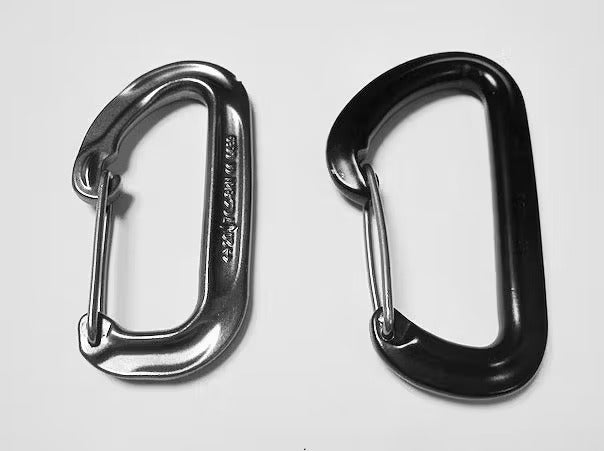
Pour la plupart des mousquetons plus grands et plus lourds, la corde finissait par se couper, et le mousqueton était encore en assez bon état pour être accroché à ton porte-mousquetons et continuer à grimper. En revanche, avec les mousquetons légers et plus petits, après environ 3 à 5 chutes, le mousqueton était fortement déformé et je le considérais comme non fonctionnel (la trappe ne s'ouvrait pas), et à quelques occasions, la sangle Dynex de 10mm finissait par se couper.
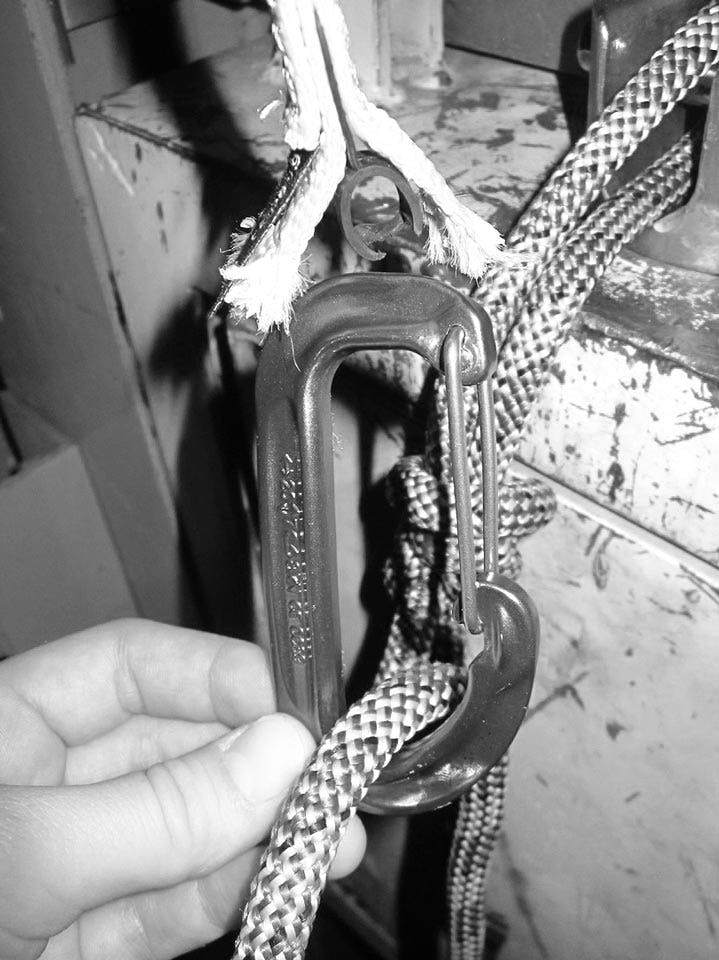
Évidemment, ce test est carrément sévère – personne sensé ne prendrait (ou ne pourrait) subir à répétition des chutes impressionnantes avec un facteur de chute de 1,7 alors qu'il est assuré statiquement sur la même section de corde – mais, en comparaison, les biners légers se sont fait malmener plus tôt. Quelle est la morale de l'histoire ? Utilise le bon outil pour le boulot. Les biners plus lourds, avec une section transversale plus importante, ont leur utilité : ils sont costauds et supportent bien les abus. Utilise ce genre de biners pour tes attaches rapides quotidiennes sur le rocher, là où tu es plus susceptible de faire des chutes répétées en travaillant les mouvements sur ton gros projet. Tandis que les biners plus petits et légers ne sont pas conçus pour résister au même niveau d'abus et conviennent mieux quand le poids compte, et que tu n'es pas aussi susceptible de prendre des chutes énormes à répétition, comme en alpine ou lors de l'escalade sur glace.
Of course any rated carabiner can be used for multiple purposes, but like most climbing gear, they are often designed for a specific or intended use. Choosing the right biners for the type of climbing you're doing will benefit you in the end-a rack of light wiregates on an alpine route will help you move faster, burly sport climbing biners will extend the life of your gear, etc. As with almost anything, it pays to have the right tool for the job.
Stay safe out there,
KP

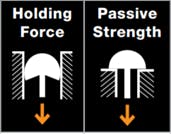
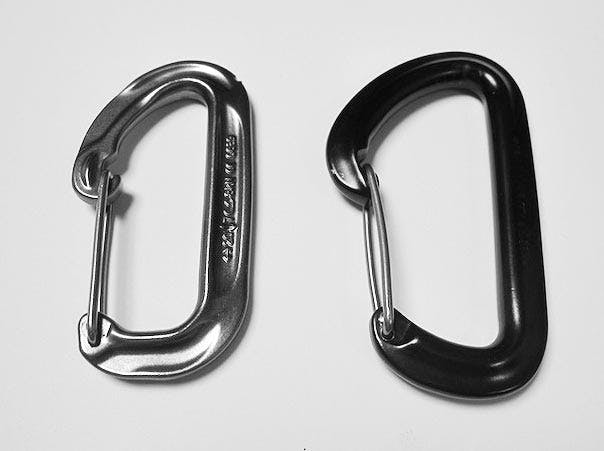


Watch Connor take down another classic testpiece on the Empath cliff in Kirkwood, California.




Follow BD Athlete Yannick Glatthard deep into the Swiss Alps as he shares his home...
Follow BD Athlete Yannick Glatthard deep into the Swiss Alps as he shares his home mountains with close friends.

Follow Dorian Densmore and Mya Akins for another winter season of steep Alaskan spines, backyard...
Follow Dorian Densmore and Mya Akins for another winter season of steep Alaskan spines, backyard couloirs, and deep adventures in the mountains.
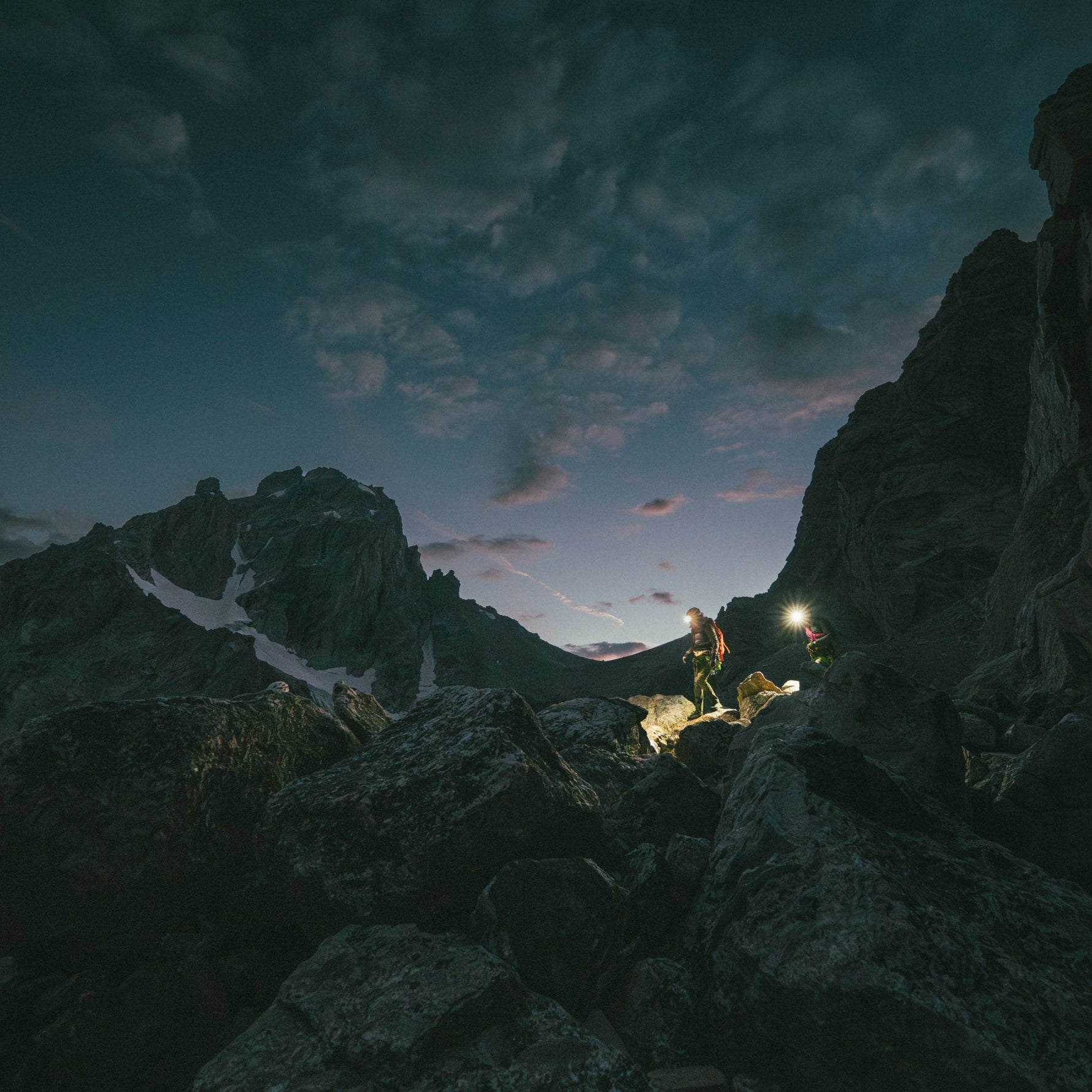
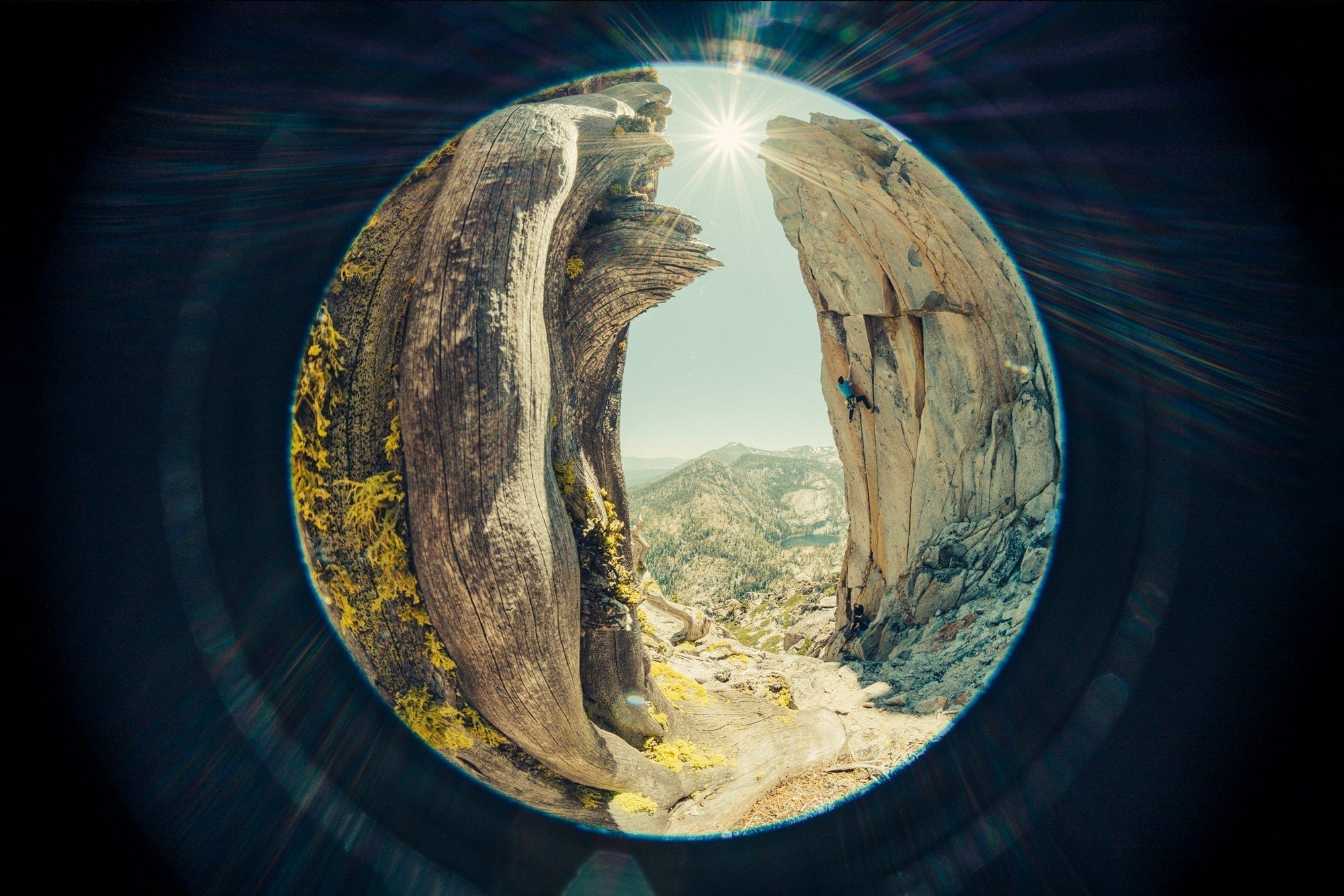
Watch BD Athlete Alex Honnold throw down on some hard trad high above Tahoe.
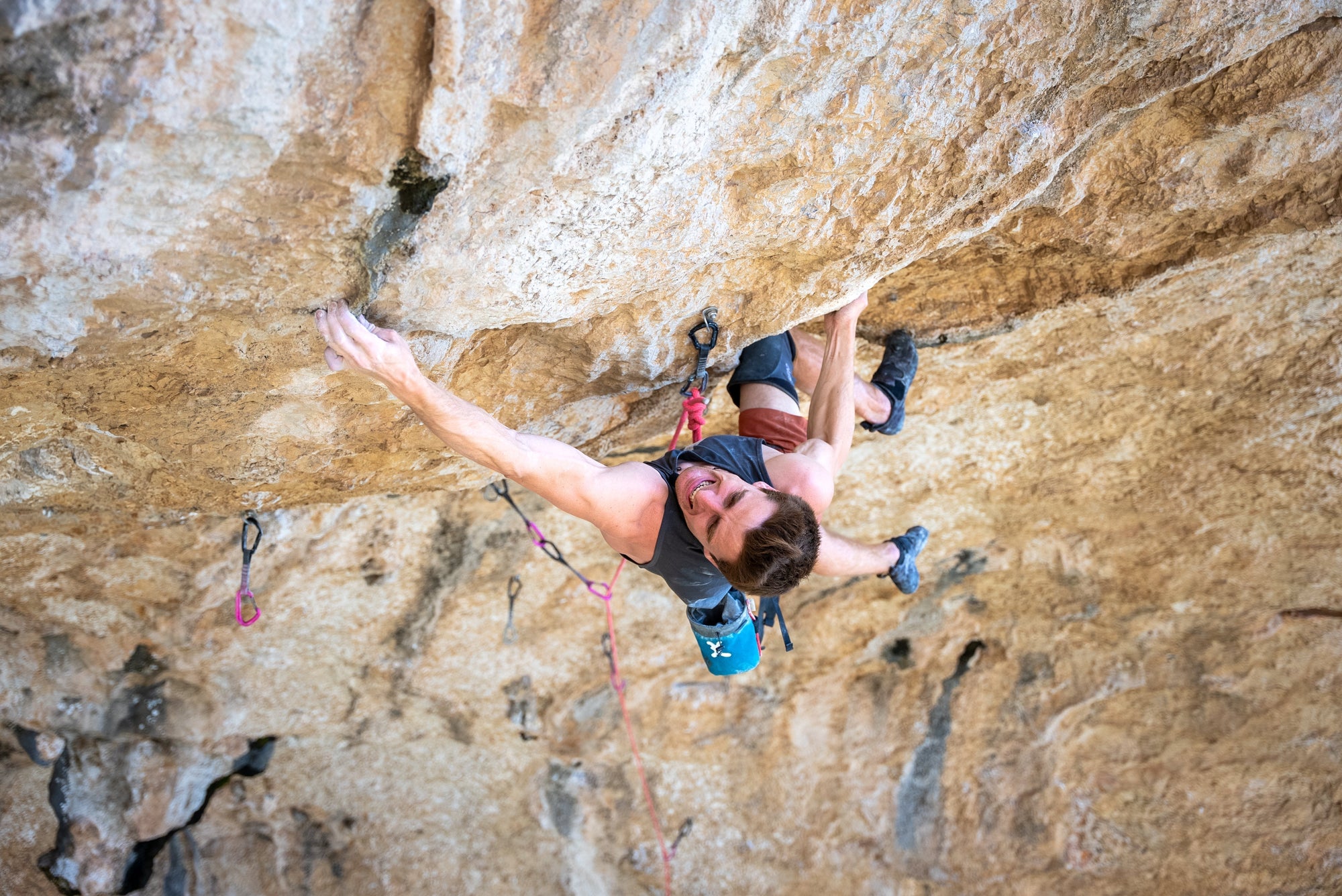
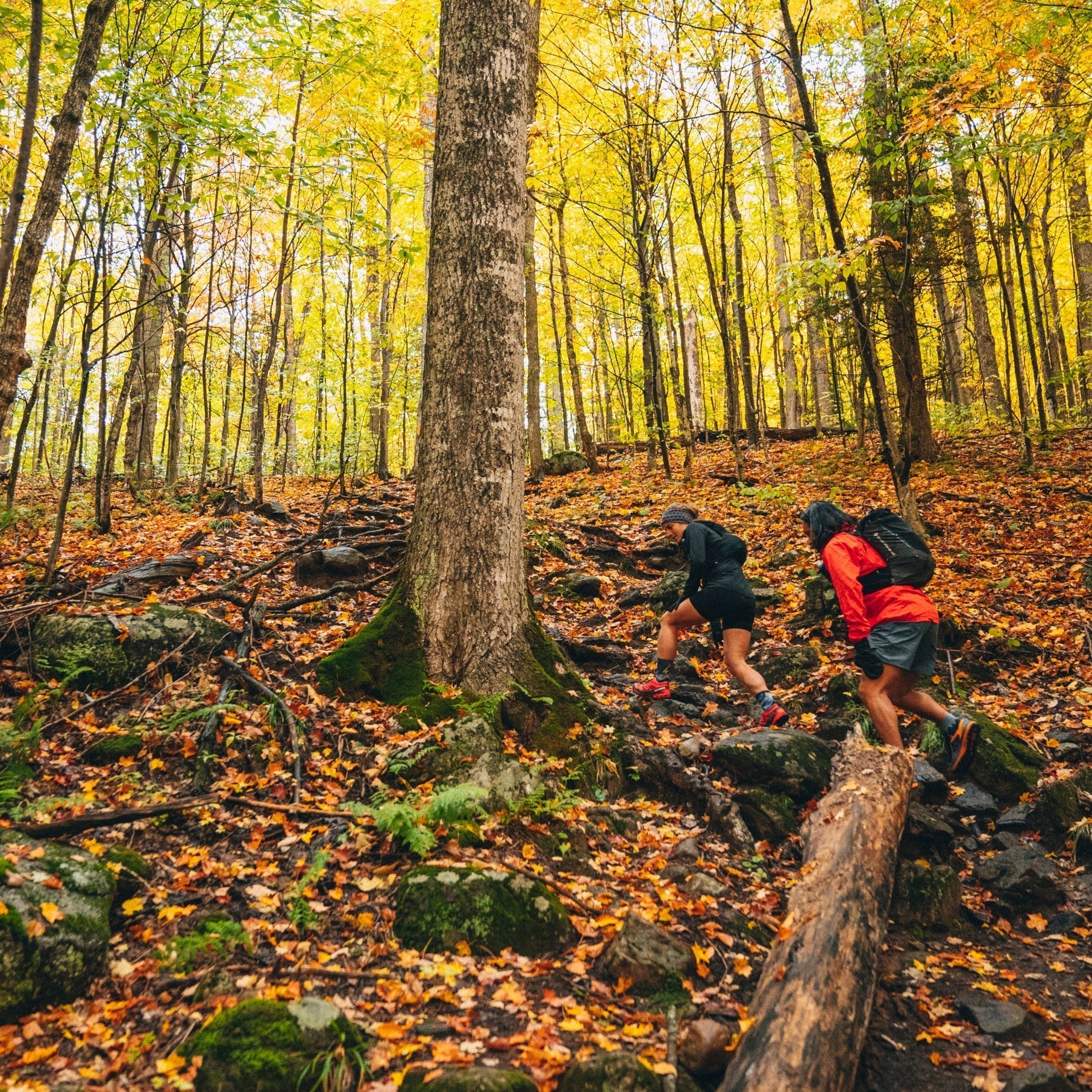
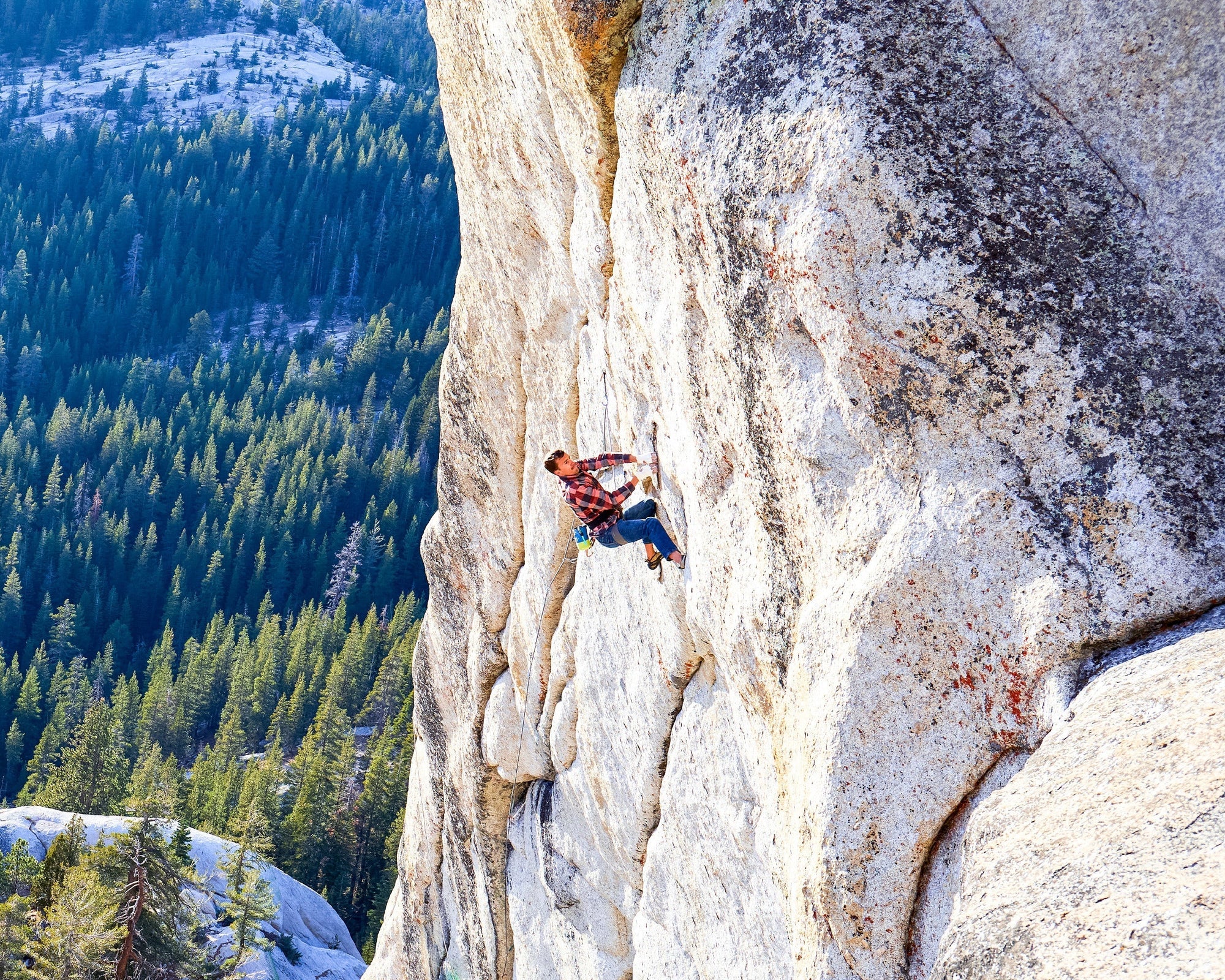
In 2012, filmmaker and photographer Ben Ditto, and professional climber Mason Earle equipped an immaculate...
In 2012, filmmaker and photographer Ben Ditto, and professional climber Mason Earle equipped an immaculate line in Tuolumne’s high country. But their attempts to free the route were thwarted when Mason’s life changed drastically. With the help of Connor Herson, Ditto and Mason found a way to keep the dream alive.
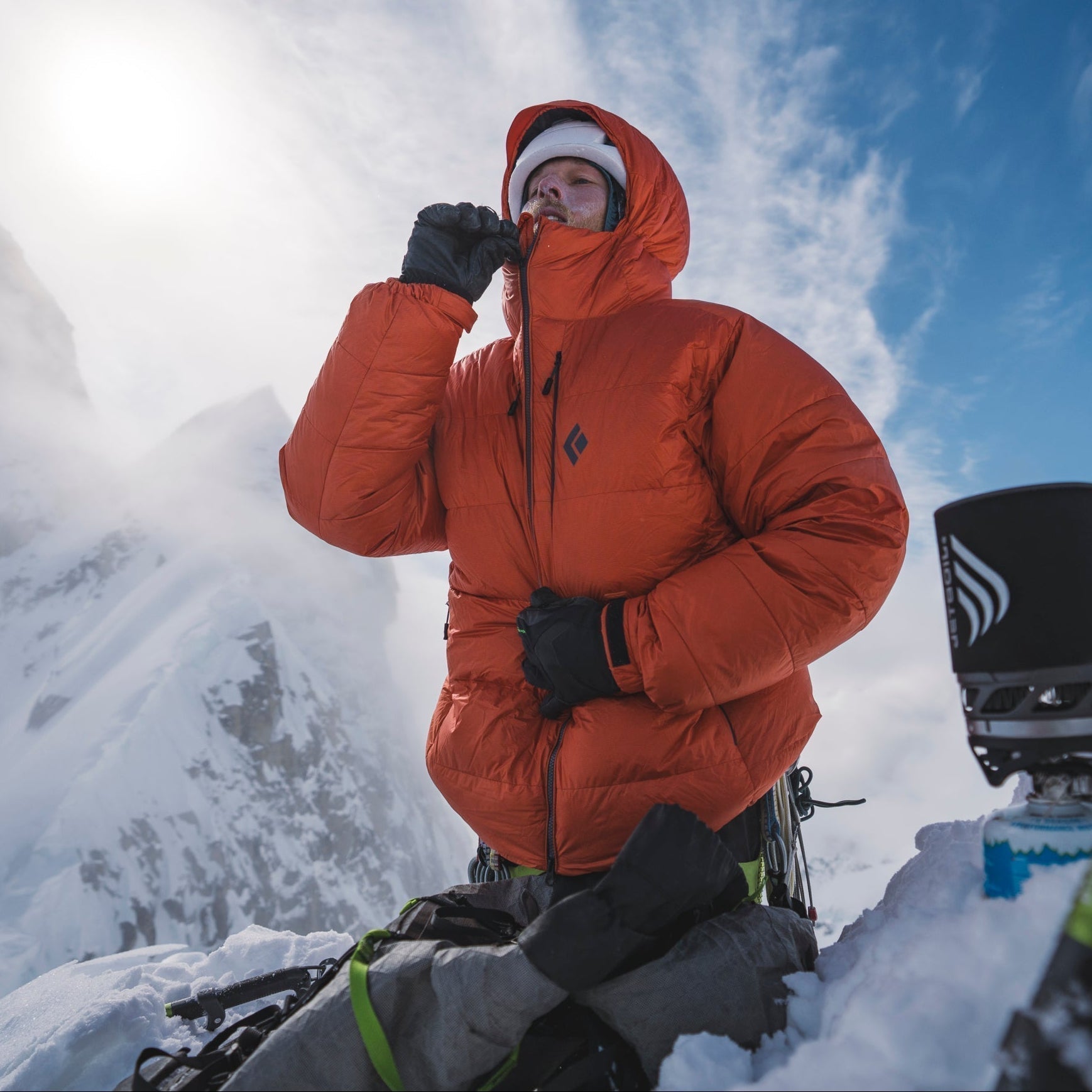

Watch and learn as our Field Test Coordinator runs you through a step by step...
Watch and learn as our Field Test Coordinator runs you through a step by step process of trimming and setting up any STS-style Black Diamond skin.
